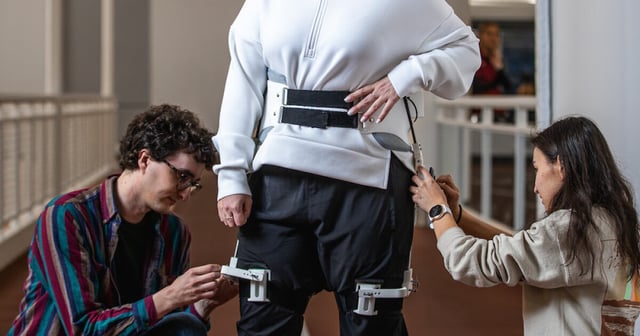Overview
- More than 80% of stroke survivors experience difficulty walking, significantly impacting their daily lives and independence.
- The robotic hip exoskeleton, designed by the University of Massachusetts Amherst, mimics split-belt treadmill training to improve walking symmetry.
- The device provides resistive and assistive forces to the hips, effectively training individuals to modify their walking asymmetry.
- Portable and adaptable for overground use, the exoskeleton enhances the accessibility of gait training and the transfer of benefits to real-world contexts.
- Future research will focus on measuring neural changes caused by the exoskeleton and testing its effectiveness on stroke survivors.
